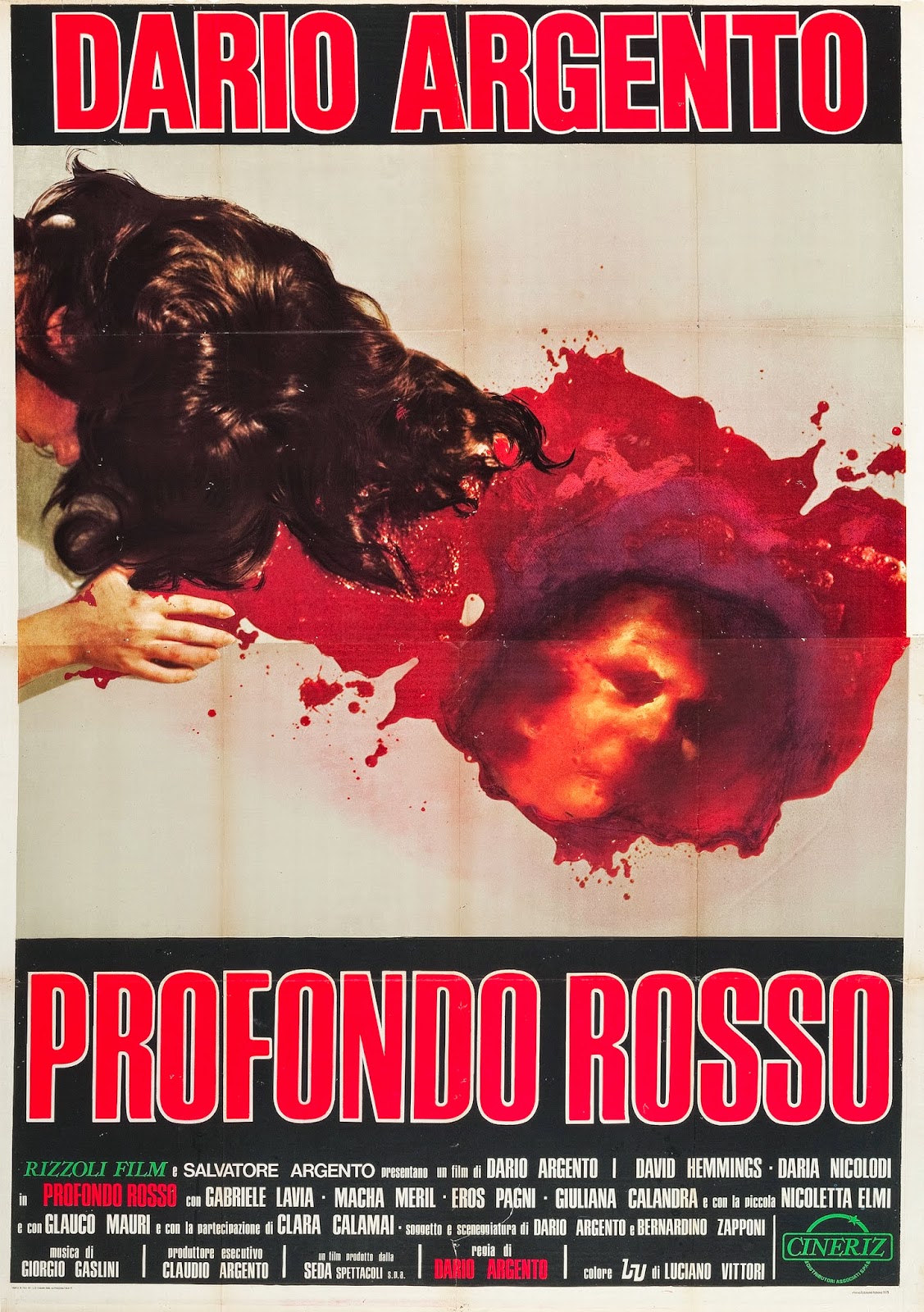Film Review: Deep Red (1975)



The success or failure of Dario Argento’s Deep Red all hinges on a risky gamble. For me, the gamble paid off in a big way. I can’t go much further in explaining this though, because to do so would give it all away—and that takes all the fun out of it. I’ll say this: early in the film, a memory is planted in your subconscious, just like it is in the protagonist’s. By the end, when all is revealed, you’ll scream “Ah ha!” At least I did. But, if this memory is placed anywhere other than your subconscious—if you see it—the gamble has failed, and so has the movie. Please don’t take this as a challenge to “figure it all out.” Let it come naturally—you’ll have a hell of a lot more fun that way.

Argento and fellow writer Bernardo Zapponi managed to pull off another very neat trick with Deep Red. They crafted a very good mystery while fooling you into thinking it was a bad one. Their use of misdirection and false leads could be infuriating if it wasn’t so much fun. And by the time we get to the end, well, the final swerve is one for the ages—and one that would go on to influence at least one of the most famous slasher franchises of the 80s.

Here’s the plot in a nutshell: Piano teacher Marcus Daly (David Hemmings) witnesses the murder of his neighbor (Macha Méril), a renowned psychic. Along with plucky reporter Gianna (Daria Nicolodi), the two set out to solve the mystery themselves. As the duo investigates, the black-gloved hand of the killer has it in for anyone involved with the clues that are discovered, dispatching them in increasingly bizarre and bloody ways. This all culminates in a seeming reveal, followed by another, followed by another.

Deep Red is typical of the Giallo genre (Italian thriller/horror films), but where many of those movies fail narratively, Argento’s does not. The plot is solid, even by American standards. It may seem over the top or downright silly at times, but it’s taking you somewhere, believe me. The quirky camera style and musical choices can be a distraction, but everything serves a purpose. Unique POVs, quick cuts, and fast zooms keep viewers on edge, while sudden blasts of electro-synth jar you into attention. The score (by Goblin, of course) is reminiscent of a heist film montage, giving the death scenes a strange air of playfulness. It’s weird, but in this case, weird is good. Embrace it.

Modern horror death scenes can be extravagant displays of dark blood and gore spewing forth, soaking clothing and surroundings. I can’t find a lot to hold onto cinematically with these visceral eruptions, just the urge to cringe and turn away. Argento death scenes are a bit different—they are exercises in beauty, an opera of color. Argento’s blood does not look like real blood. It doesn’t spray in a mist, it oozes like bright red candle wax. Just enough is shown, no more. While the death scenes are elaborate in their staging, they are not gratuitous (they may even be a bit cheesy). Argento, if nothing else, is a master of the use of color, and his title is aptly chosen.

Many would say that Argento’s 1977 film Suspiria is the pinnacle of his work. I wouldn’t argue that too hard, but I would disagree. Deep Red is better, even if only by a small margin. Suspiria may have a “scarier” story, and it may have deeper elements of supernatural horror, but Deep Red has a better mystery and is more coherent. I guess it depends on how you take your Gialli. I would also argue that Deep Red is the most influential of Argento’s work. Elements of everything from the Friday the 13th and Halloween franchises to The Ring (2002) can be easily traced back to this work. It has moments of genuine creepiness that most modern slasher movies lack—and that ending is better than any of them.
